Softstrong: Pastel Dream, 2018•
Co-curated by Amirah Raudhah & Elaine Teo
Text by Elaine Teo, Dipali Gupta & Masuri Mazlan
Supported by Seelan Palay of Coda Culture, Divaagar, and Krafers' Paradise
Intern: Odelia Yen, Haylee Han
Photography by Arina Rubinskaya, Shawna Chia, and Maisarah Kamal
Coda Culture, #05-05, Golden Mile Complex, 5001 Beach Rd, Singapore 199588
Foreword by Dipali Gupta
While we were sharing our second cigarette on the pavement opposite our LASALLE BA Fine Arts Winstedt Campus, Masuri awkwardly expressed his unease about writing his own work of art. He saw it as a shortcoming. I saw it as the strength of a visual artist. What cannot be put into words is unerringly, always, skilfully, elucidated through the colour, form, texture, and material of Masuri sculptures.
It is indeed remarkable to be associated with Masuri. He can oscillate from being erratic and chaotic to being calm and centred in his state of flow. It is this flow that disconnects him from his real-world, replete with myriad obstacles, and connects him to play. The play, his escapism, encourages him to collaborate with his materials, redefining them in refreshing and quirky forms.
His toys have always been tough industrial substances. He wonders, creates stories, extracts every bit of information contained within its matter, and softens it with his artist hand to create dreamy, irrational, and often romantic works of art for these.The materials resonate with his personality, possessing the uncanny flexibility of being transformed in inspiring ways.
In his first solo, Softstrong, Masuri confronts these industrial substances yet again by integrating their sculptural competencies and engaging them as paintings. His performative techniques of layering, rhythmic texturing, and delicate whirling evoke associations with confectionary making. Emitting a pastel palette, an icing on the cake - kind of feeling. It's too yummy to resist!
Dipali Gupta
2019
Interview with Masuri Mazlan by Elaine Teo
This exhibition marks Masuri Mazlan's first solo presentation, Softstrong. The exhibition showcases a delectable confection of sculptural paintings, drawings, and sculptures that are primarily made using industrial materials like silicon, plaster, and polyurethane. Many of the pieces have a quiet force about them. The pastel hues retain their almost storybook-like quality while elevating industrial materials into objects for consideration. While creating the works for the exhibition, I had the pleasure of observing Masuri engage in a deeply experiential approach with his materials. In this interview, Masuri discusses how he formulates and fully realises his artwork.
Elaine Teo (ET): Hello, Masuri. Tell me a little bit about your educational and artistic background. What inspires you and where do you get your inspiration from?
Masuri Mazlan (MM): I graduated with a BA in Fine Arts from LASALLE College of the Arts. My studio practice has long oscillated between painterly sculptural media and installation work. My inspiration comes from both the surrounding architecture around me and my personal memories. Growing up, I was solely raised by my late grandmother. We did not have much to live by, and I had no access to toys to play with. At that point in time, I was playing with discarded materials while my grandmother cleaned HDB flats and swimming pools. From there, I tried to understand how these objects were made. It spurred me to create and make my own "toys". In particular, the process of transforming these materials into objects of play was liberating and exciting. As a little reward from my grandmother, I would be given one of those brandless chocolate biscuit sticks wrapped in colourful foil. These visual and tactile experiences have stuck with me over the years.
ET: Tell us about your first solo exhibition, Softstrong. What is it like from initial conceptualisation to seeing the final outcome we have before us? What was an average day at the studio like?
MM: I wanted to show that industrial materials can be transformed into something that is soft, likeable, interesting, and with a personality rather than hard-edged or boring. With hardness, there is always this kind of tension—it is cold, hard, and unyielding. Whereas, by softening these qualities, there is a sense of lightweight. Sometimes, when you look at a painting, there is a barrier between the audience and the artwork. I want audiences to start bridging that gap, feeling a sense of calm dissonance. When people actually look at the work, there is this kind of double-take quality to it. Part of my artistic practice has been inspired by the post-minimalist movement, with its shift away from the purely masculine, hard-edged, severe take on deconstruction. The movement rejects the near-authoritarian tendencies of minimalism and moves beyond it. I want to stretch the limits of the materials to their very core. In the preliminary stage of conceptualising this exhibition, I let the process of experimentation with the material itself "speak" to me. The processual, or rather, sustained state of identifying the characteristics of a material is gratifying and intriguing. At times, I feel like I am playing the role of a chemist or an alchemist, finding the right recipe for the materials to work with one another. The process allows me to unravel its fullest potential as a medium for the body of work. Though the artworks were made from manufactured chemicals, ultimately they bear an organic feeling. Material plays an important role in the composition of the work, be it texturally or aesthetically.
ET: Some of the works feature metallic forms that are rarely strictly linear. Can you tell us about these metallic pieces?
MM: The metallic pieces birthed an idea for contrast. That is something that I want to explore for the show. When we think of a metal surface visually, we tend to imagine it as smooth and hard-edged. The metallic paintings are consciously added to explore the idea of opposites. It does, however, work well with the pastel-inflected palette of the rest of the artwork. Remember when I told you about the chocolate stick biscuit wrapped in foil? That memory of my grandmother will stay with me forever.
ET: Personally, it is interesting to find out that you are shifting your studio practice to painting for the first time, despite being formally trained in 3D media. How are you approaching your practice for this exhibition?
MM: For the show, I am still incorporating my sculptural techniques into my paintings. It is actually a great challenge for me, as I have not done any painting formally. My studio practice has been centrally focused on sculptural works and experimenting with industrial-strength materials such as latex, polyurethane, and cement. This is something new, and I am excited to venture into uncharted territory by fusing my background in sculpture into the canvas.
ET: Can you tell us about the materials used in the show? How did you encounter them?
MM: I am usually the person called upon when repairs are needed in my household. As I was using these materials around the house, I wondered if I could transform them into an object of their own that does not resemble their original characteristics. In doing so, there is both an acknowledgment and a refusal to delineate them for their original intended purpose. When I scan through my past body of work, I realise that I have the tendency to reject or subvert the leadenness of industrial materials into something that is unexpectedly softer than it should be. There is an innate quality of resilience to the material that I am personally drawn to. I think that, subconsciously, I envision the appearance of these materials as being delicate yet hard-wearing. It is a hard world out there. Can we imagine what things would be like if they were a little softer?
ET: That’s a great insight to imagine the world differently. Your visual language in this exhibition features a detailed and intricate layering of the various media. What is it about the recurring nature of these techniques that intrigues you?
MM: When I am working on a particular work, the arduous performative techniques are totally omitted from the visual representation of the work. I feel that each layer evokes the palimpsest quality of time and how things eventually manifest on the surface. There is also an idea of the pervasiveness of memory, and how it builds upon a base. The repetitive actions are quietly therapeutic yet labour-intensive.
ET: Pastel hues, commonly delineated as a "softer" colour palette (with all its related connotations), take on their own standing in Softstrong. Why did you decide to focus on this particular colour palette?
MM: Colour is an emotional cue. The softness and desaturation of pigment have a calming effect on the aesthetic experience that I want the viewer to experience. The Golden Mile Complex, where Coda Culture is situated, was designed according to brutalist architectural principles. Its use of cement, in its raw and unpretentious honesty, is something I intend to contrast and play with as the viewer enters the visually altered exhibition space. In a way, I wish for them to be transported into an alternate fantastical dimension of softness and ease. The pastel palette, working in tandem with the textural surfaces, encourages tactile perception. There is almost an invitation to truly feel the work beyond the visual. Everything in the show has a duality to it. In a sense, each work resembles a vision of utopia and transcendence. Pastel hues usually occur on the horizon. These are places of beauty that you can see and feel immersed in. However, the point on the horizon is forever out of reach. That is the allusive quality that I return to constantly as I am working in my practice. Thank you for your time throughout the process, from square one till the end. Thank you for taking the time to co-curate with Amirah for the show, even when you are busy with work at Christie’s.
ET: You’re most welcome, Masuri. I hope to collaborate with you more in the future. It has been a wonderfully exhilarating experience. Congratulations on your first sold-out solo show!
Elaine Teo & Masuri Mazlan
2019

Installation view, Softsrong at Coda Culture, Golden Mile Complex, 2019. Photo: Arina Rubinskaya
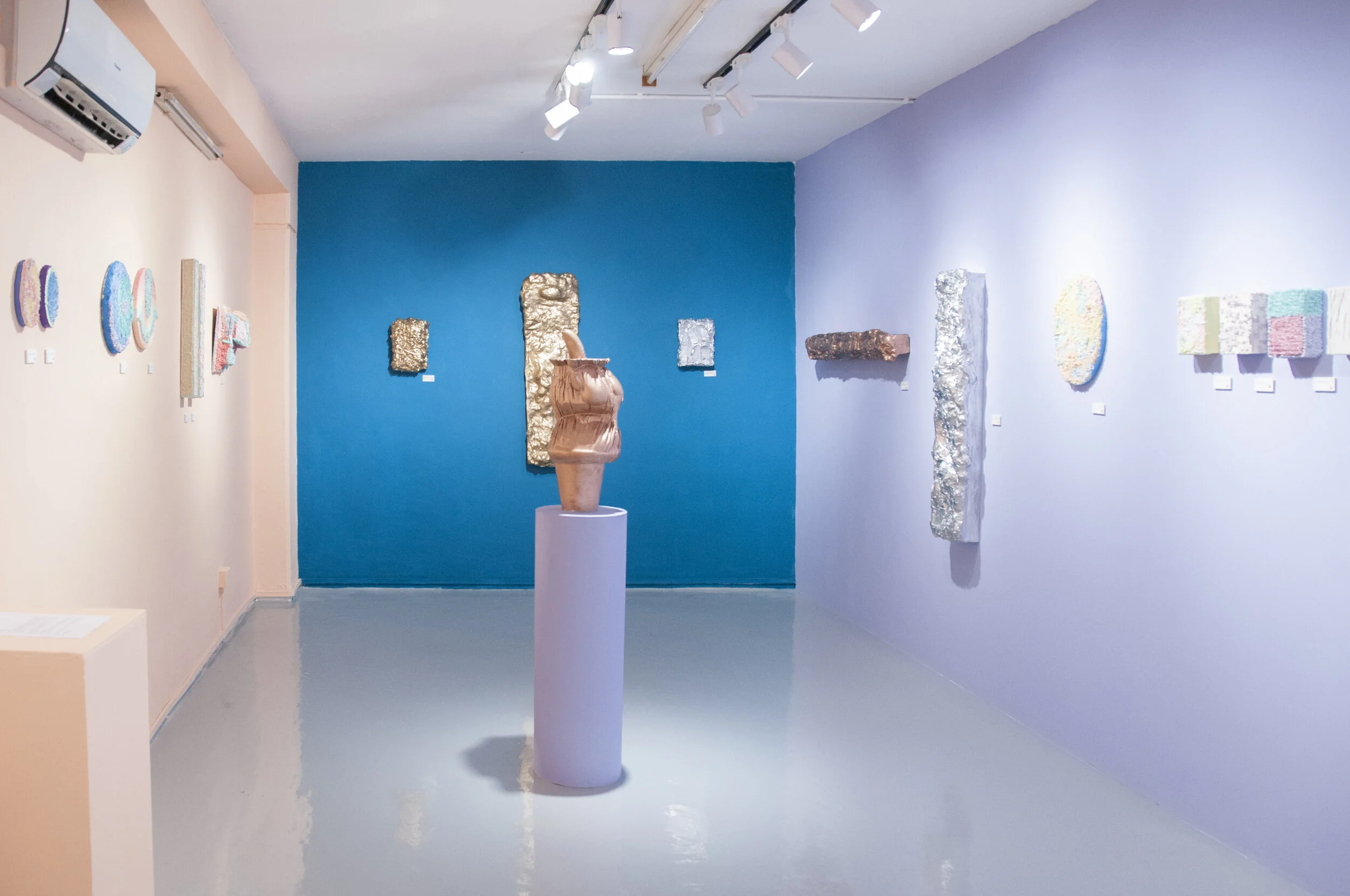
Installation view, Softsrong at Coda Culture, Golden Mile Complex, 2019. Photo: Arina Rubinskaya

Even Now Silicone, polyvinyl acetate adhesive, water-based latex paint, synthetic polymer paint on plywood panel 30.5cm x 40.5cm Photo: Arina Rubinskaya

Even Now, 2019 Even Now, 2019. Silicone, polyvinyl acetate adhesive, water-based latex paint, synthetic polymer paint on plywood panel 30.5cm x 40.5cm Photo: Arina Rubinskaya

Even Now, 2019. Silicone, polyvinyl acetate adhesive, water-based latex paint, synthetic polymer paint on plywood panel 30.5cm x 40.5cm Photo: Arina Rubinskaya

Labyrinth No.1 & 2, 2019 Silicone, polyvinyl acetate adhesive, water-based paint, and synthetic polymer paint on basswood panel 62cm x 9cm Photo: Arina Rubinskaya
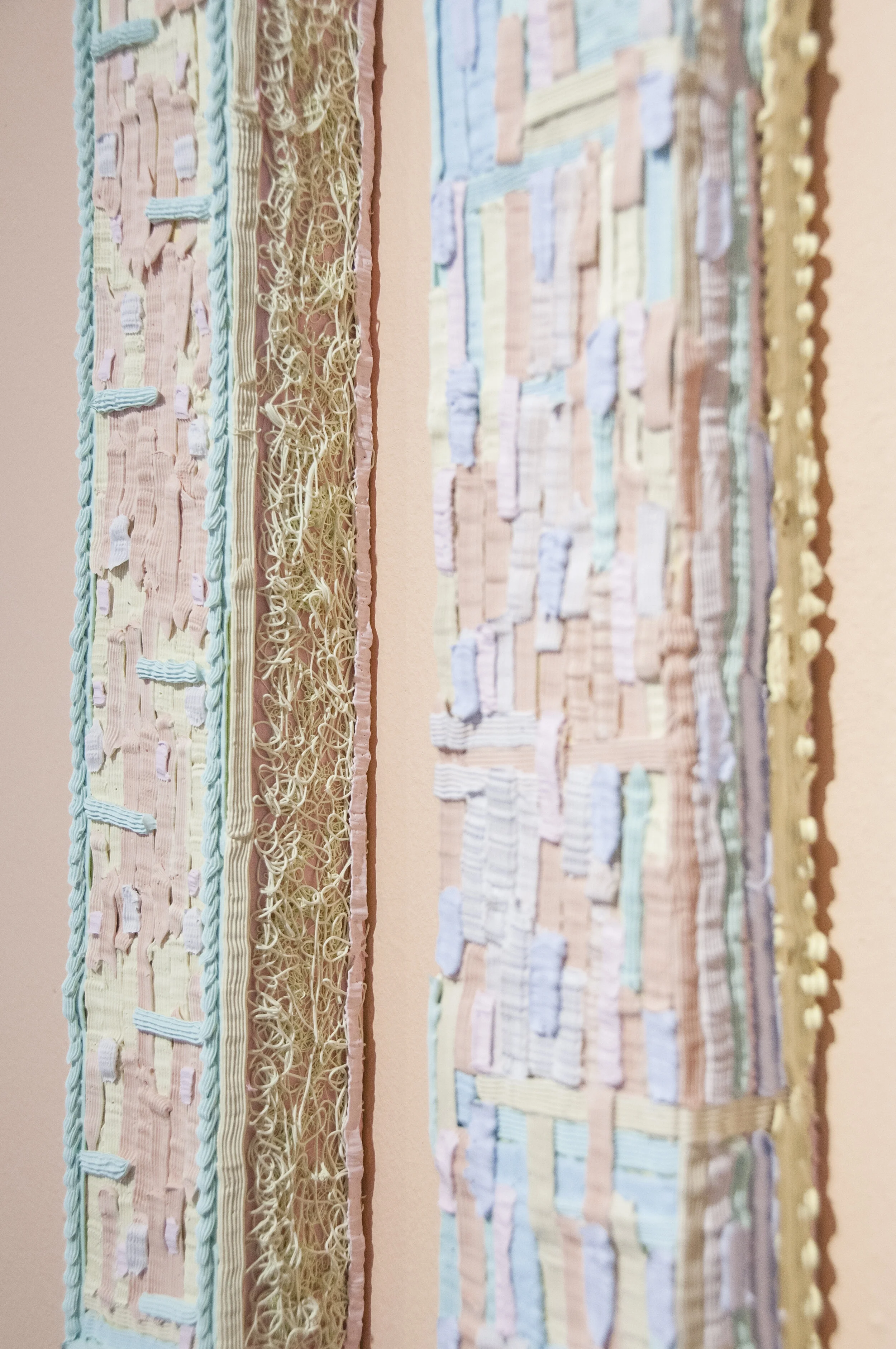
Labyrinth No.1 & 2 Photo: Arina Rubinskaya
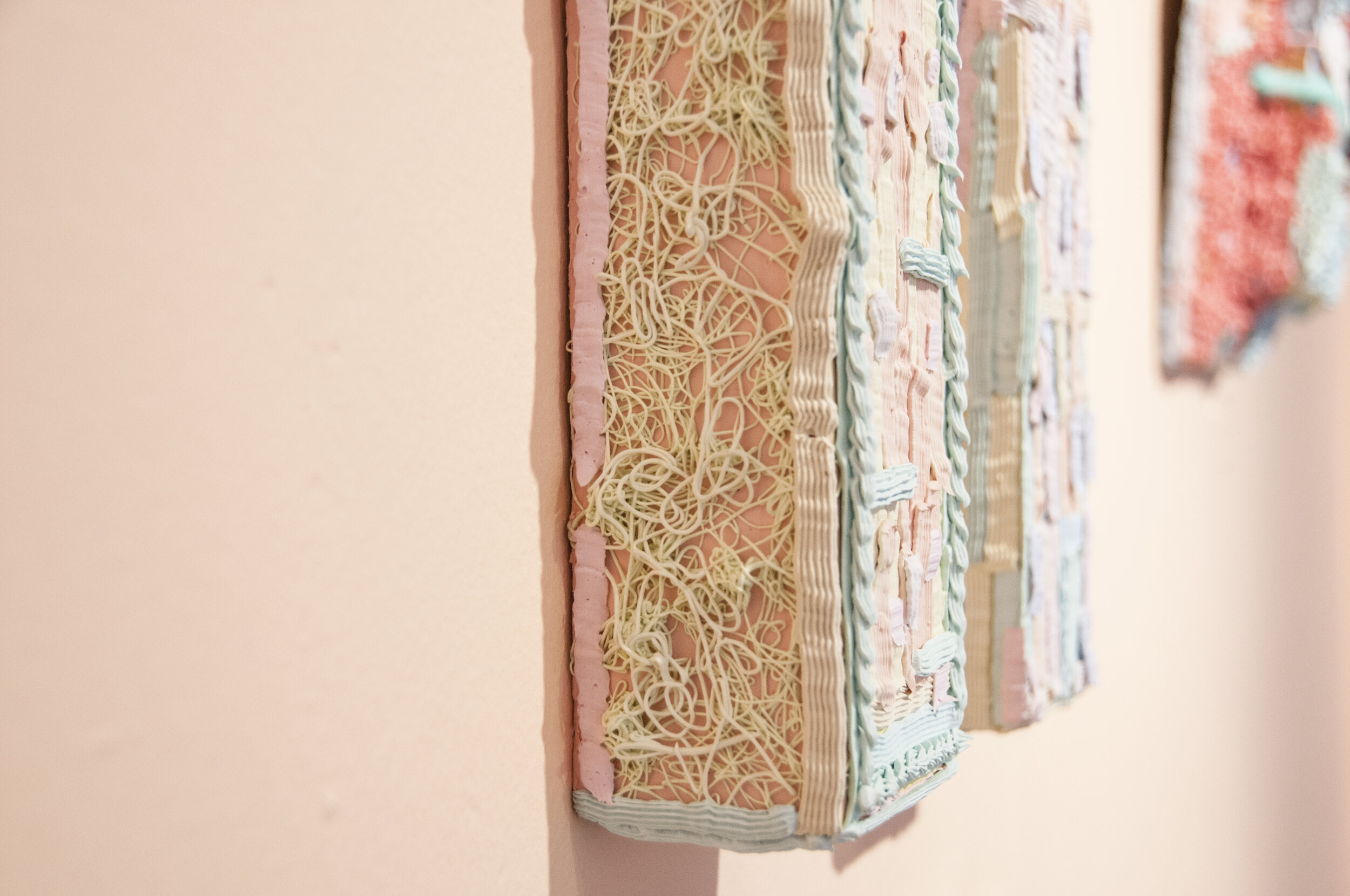
Labyrinth No.1 Photo: Arina Rubinskaya

Pastures New No.3 Silicone, polyvinyl acetate adhesive, water-based latex paint, glass and polymer embroidery beads, synthetic polymer paint on birch plywood panel 21cm x 29.7cm
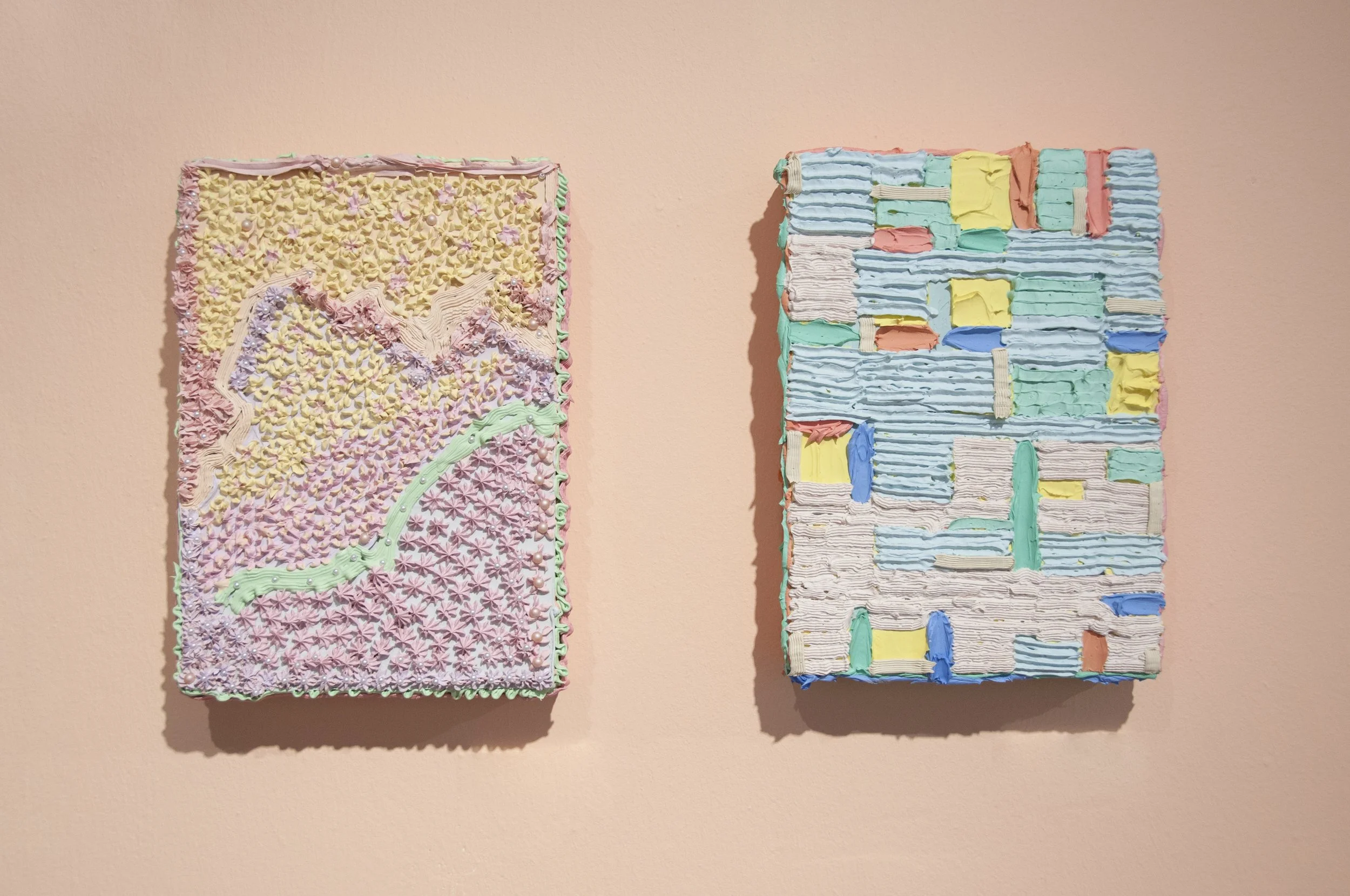
Halcyon No.1 & Pastures New No.3 Photo: Arina Rubinskaya
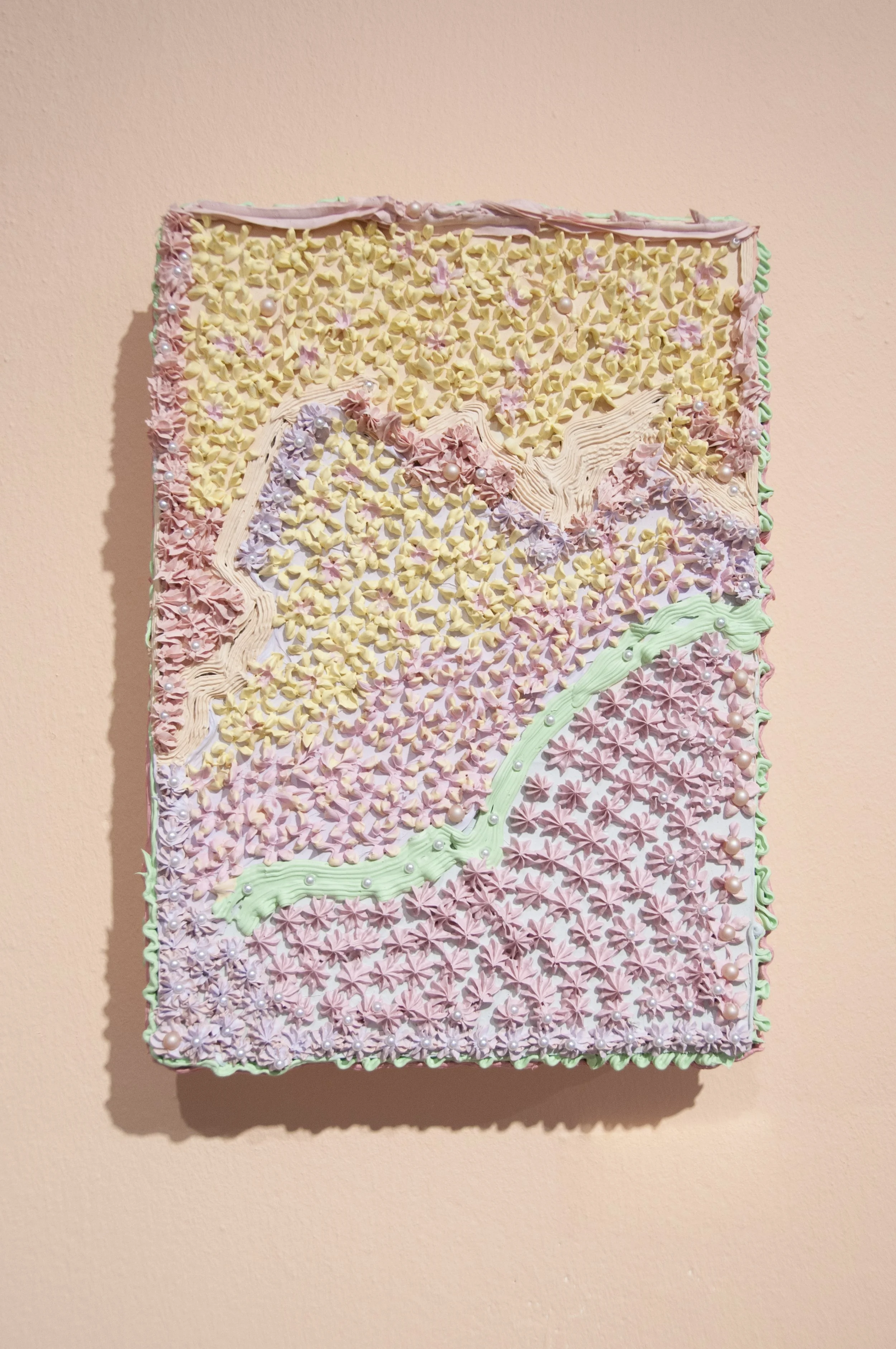
Halcyon No. 1 Silicone, polyvinyl acetate adhesive, water-based latex paint, glass and polymer embroidery beads, synthetic polymer paint on birch plywood panel 21cm x 29.7 cm Photo: Arina Rubinskaya
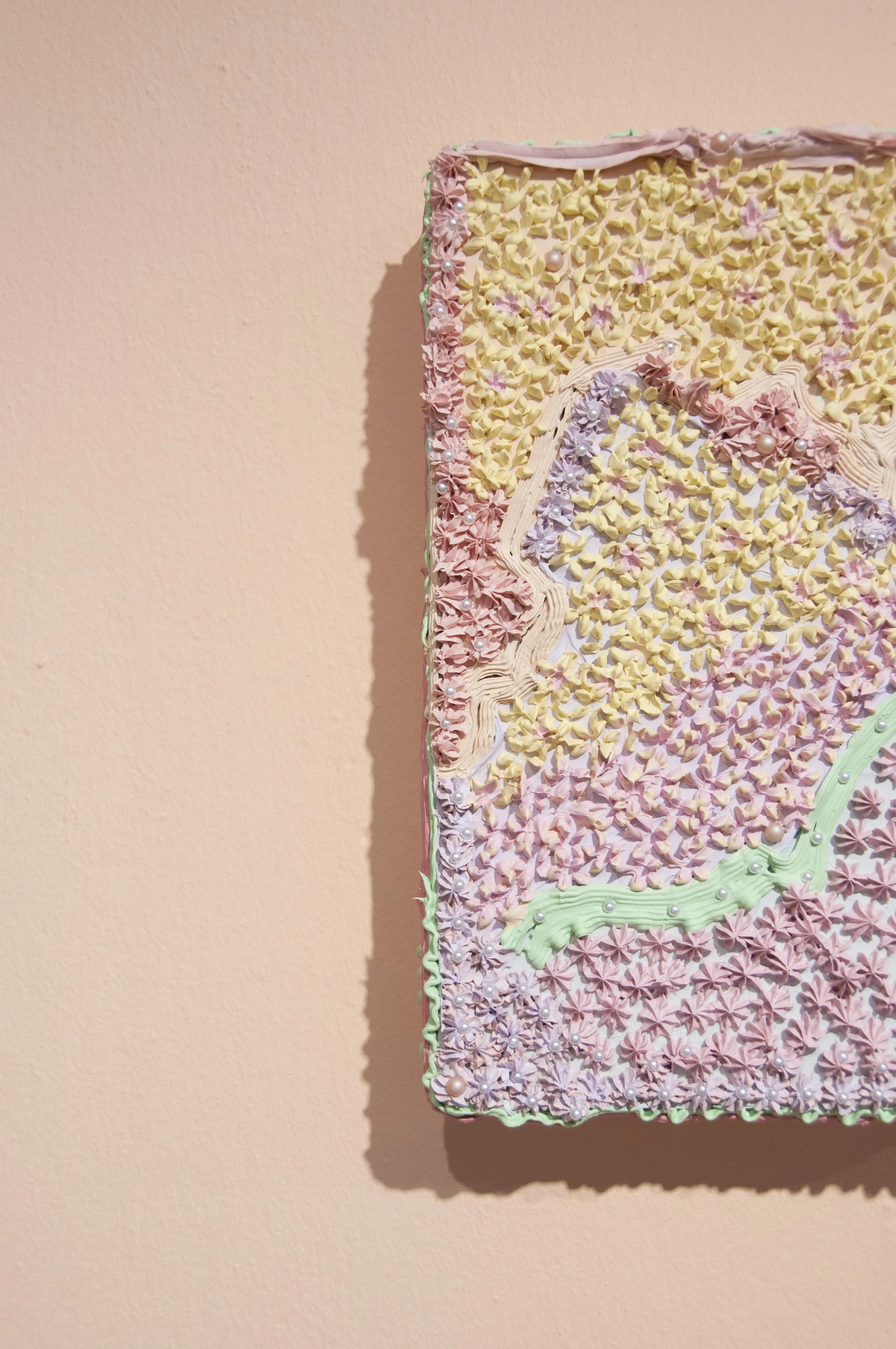
Halcyon No.1 Photo: Arina Rubinskaya
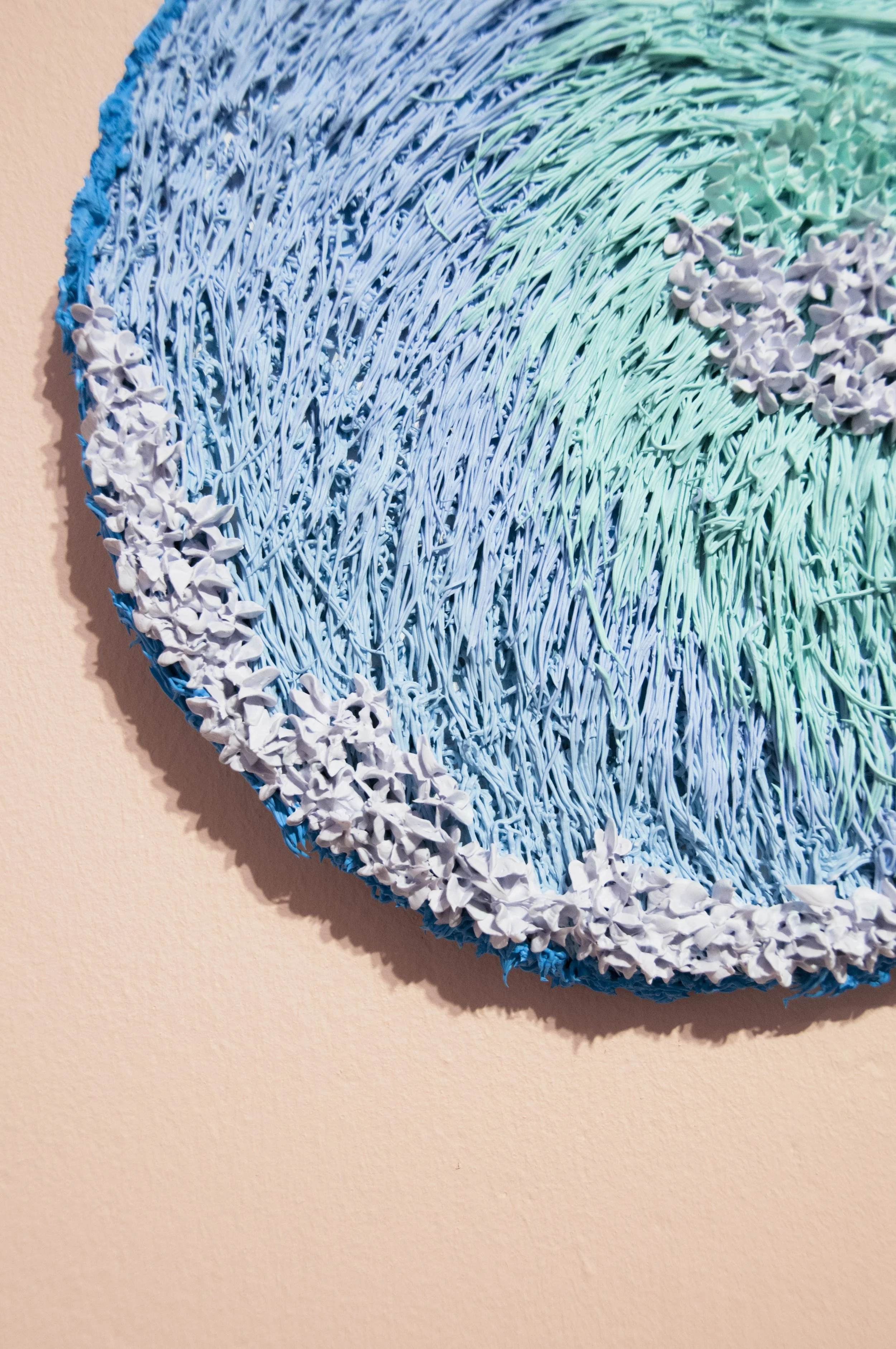
Beat Around The Bush Photo: Arina Rubinskaya
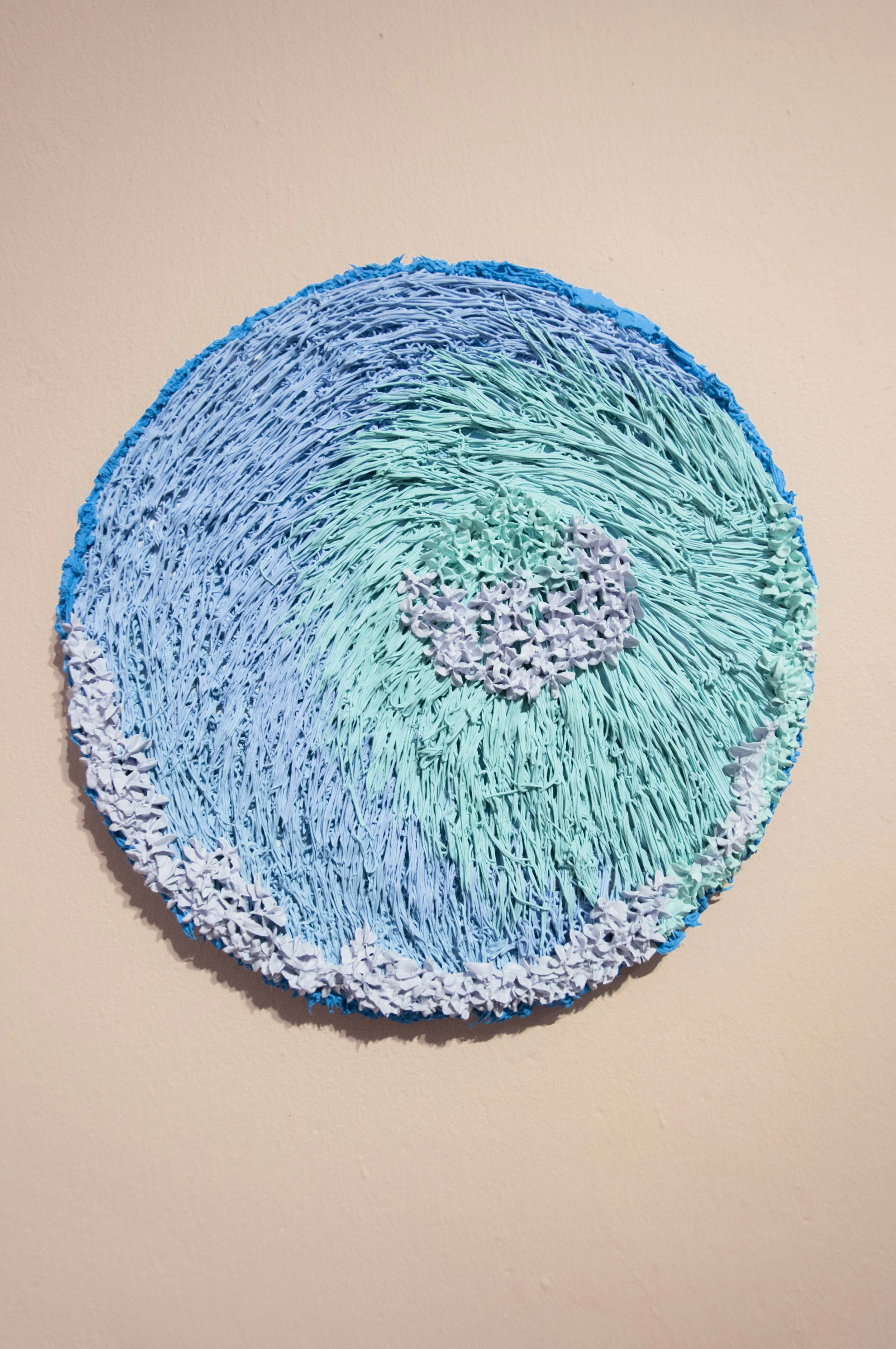
Beat Around The Bush Silicone, polyvinyl acetate adhesive, synthetic polymer paint on circular canvas 31cm diameter Photo: Arina Rubinskaya
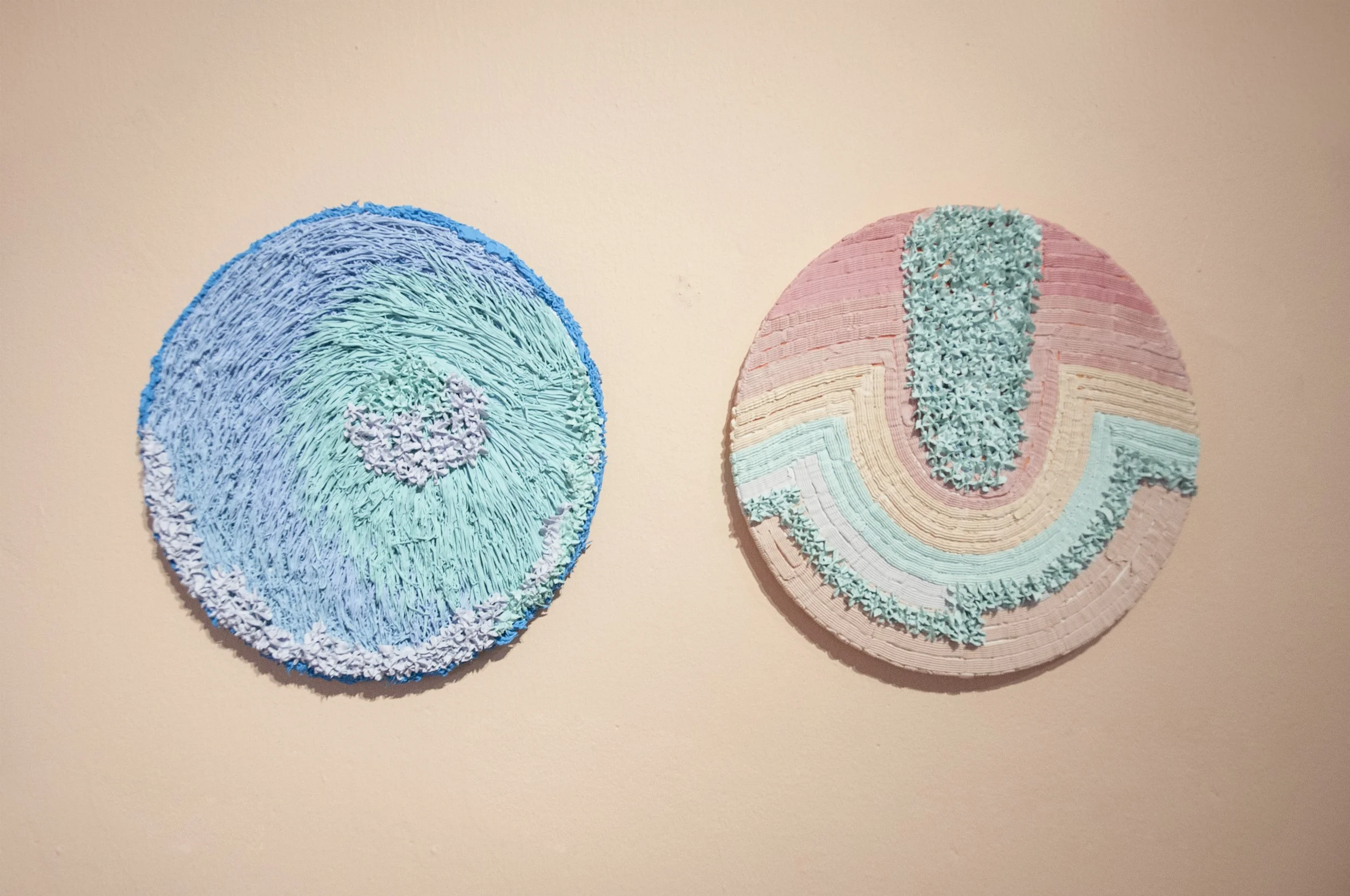
Beat Around The Bush & Guard Silicone, polyvinyl acetate adhesive, synthetic polymer paint on circular canvas 31cm diameter Photo: Arina Rubinskaya

Pastures New No.1 Silicone, polyurethane, extruded polystyrene foam, polyvinyl acetate adhesive, water-based paint, and synthetic polymer paint on a wooden frame 34cm x 29cm Photo: Arina Rubinskaya

Pastures New No.1 Photo: Arina Rubinskaya
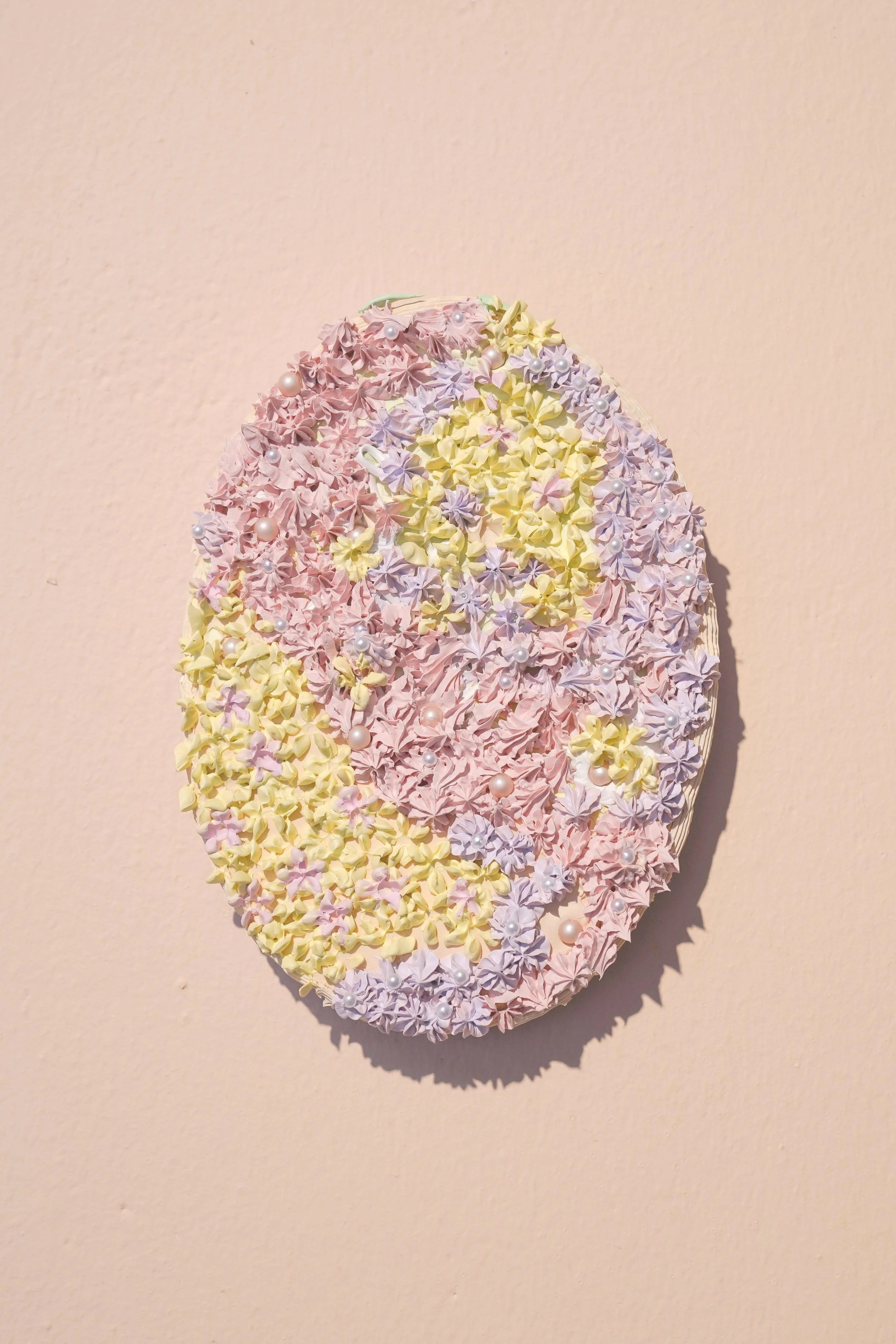
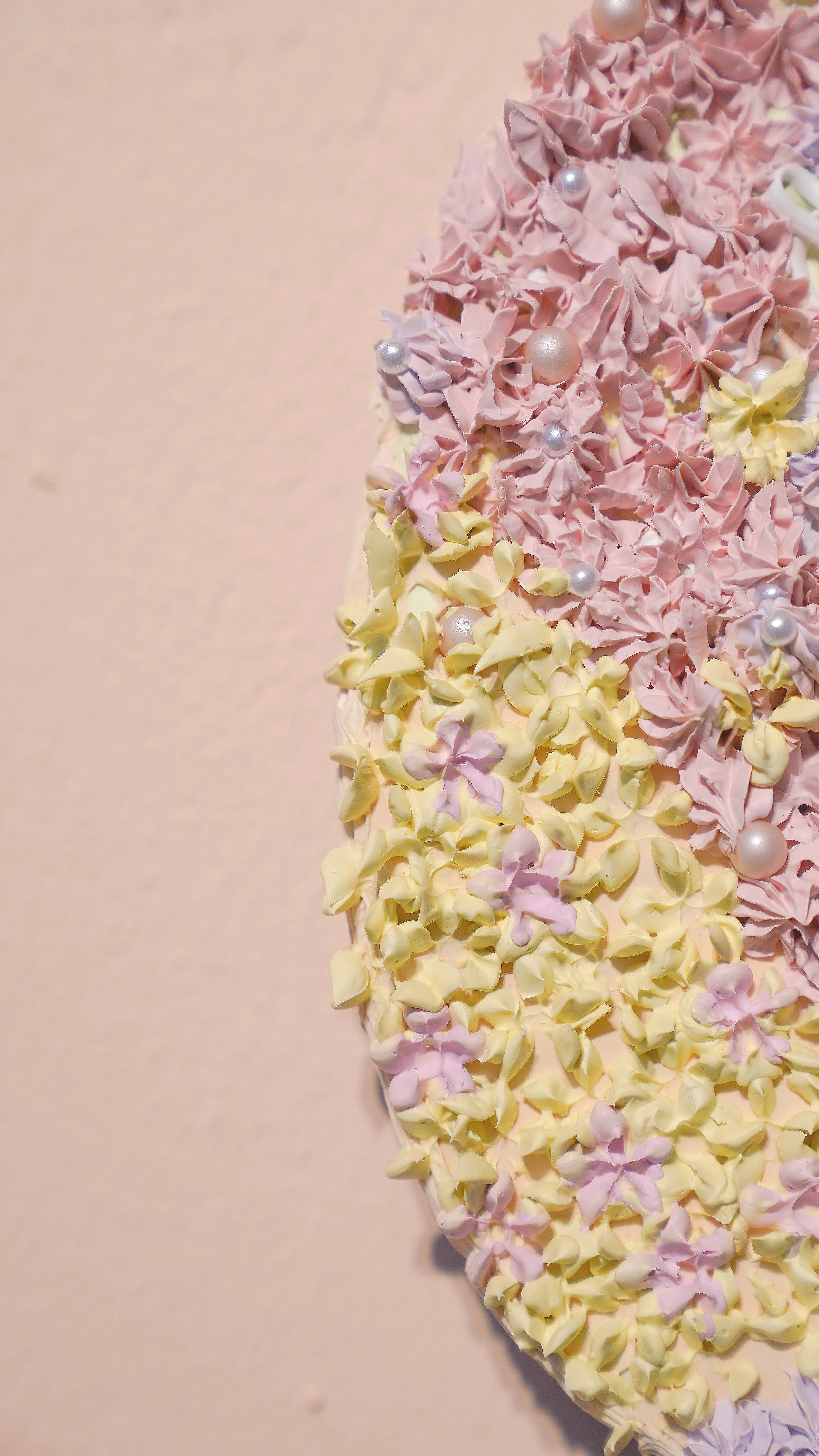
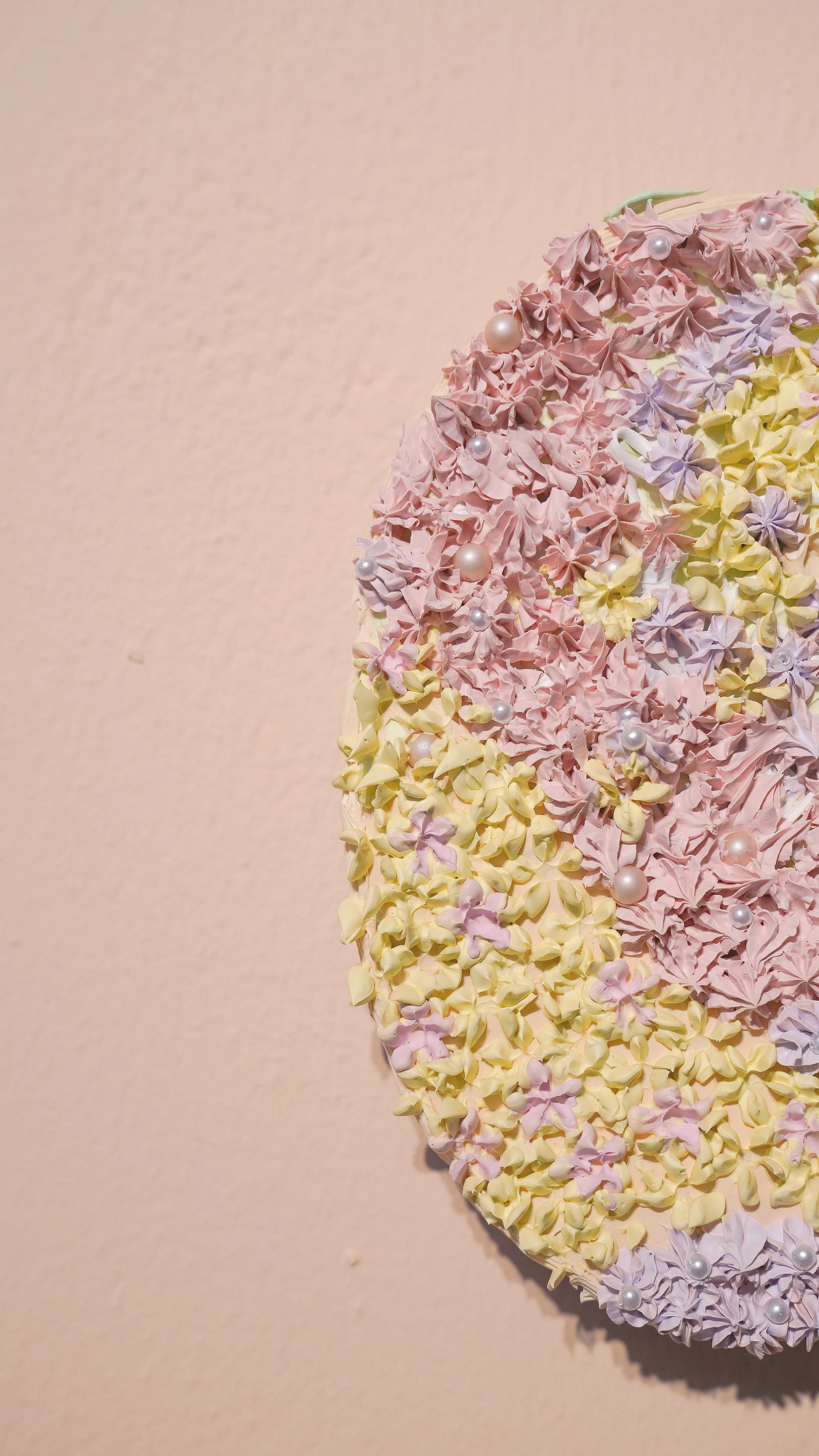
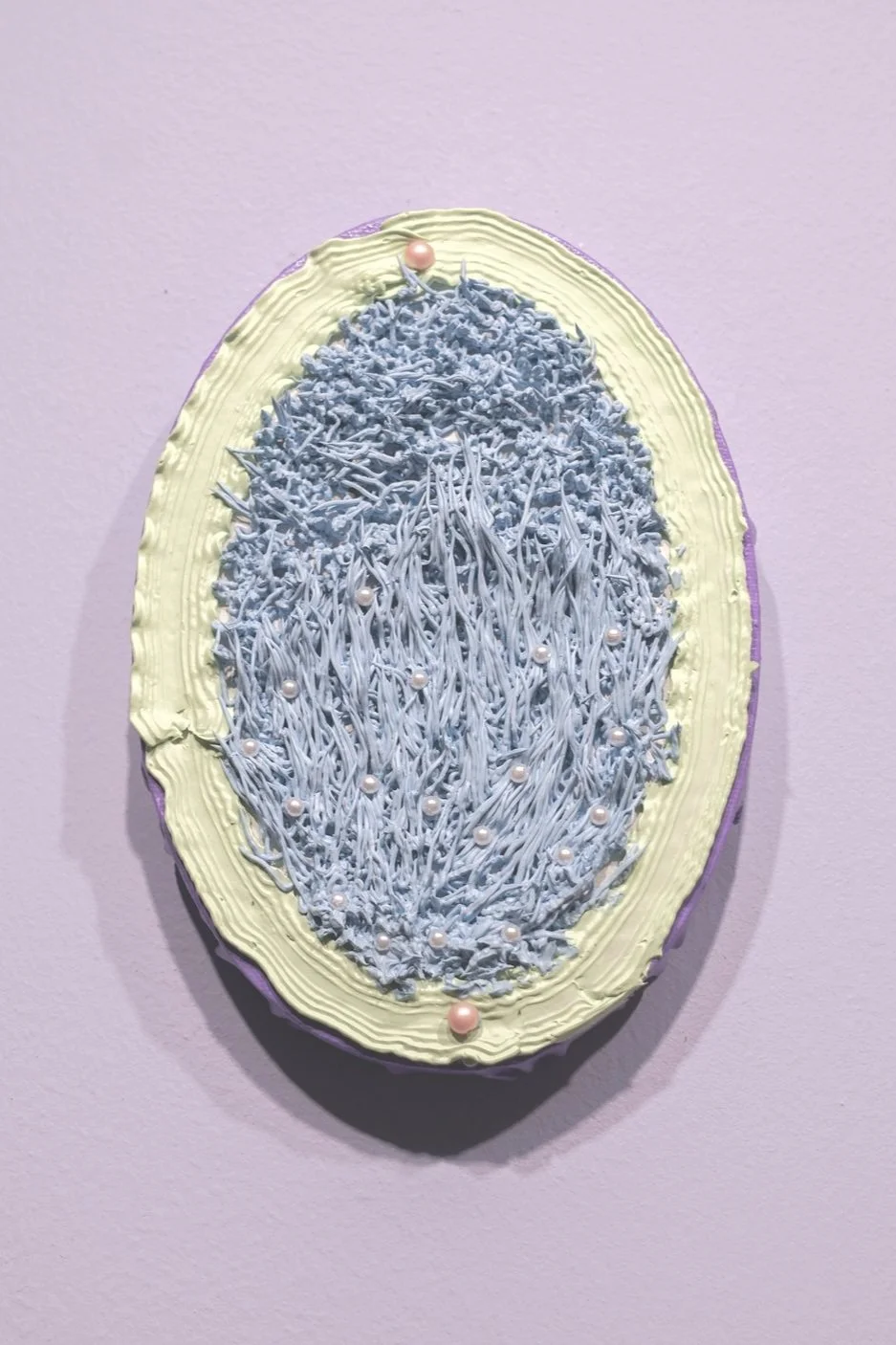
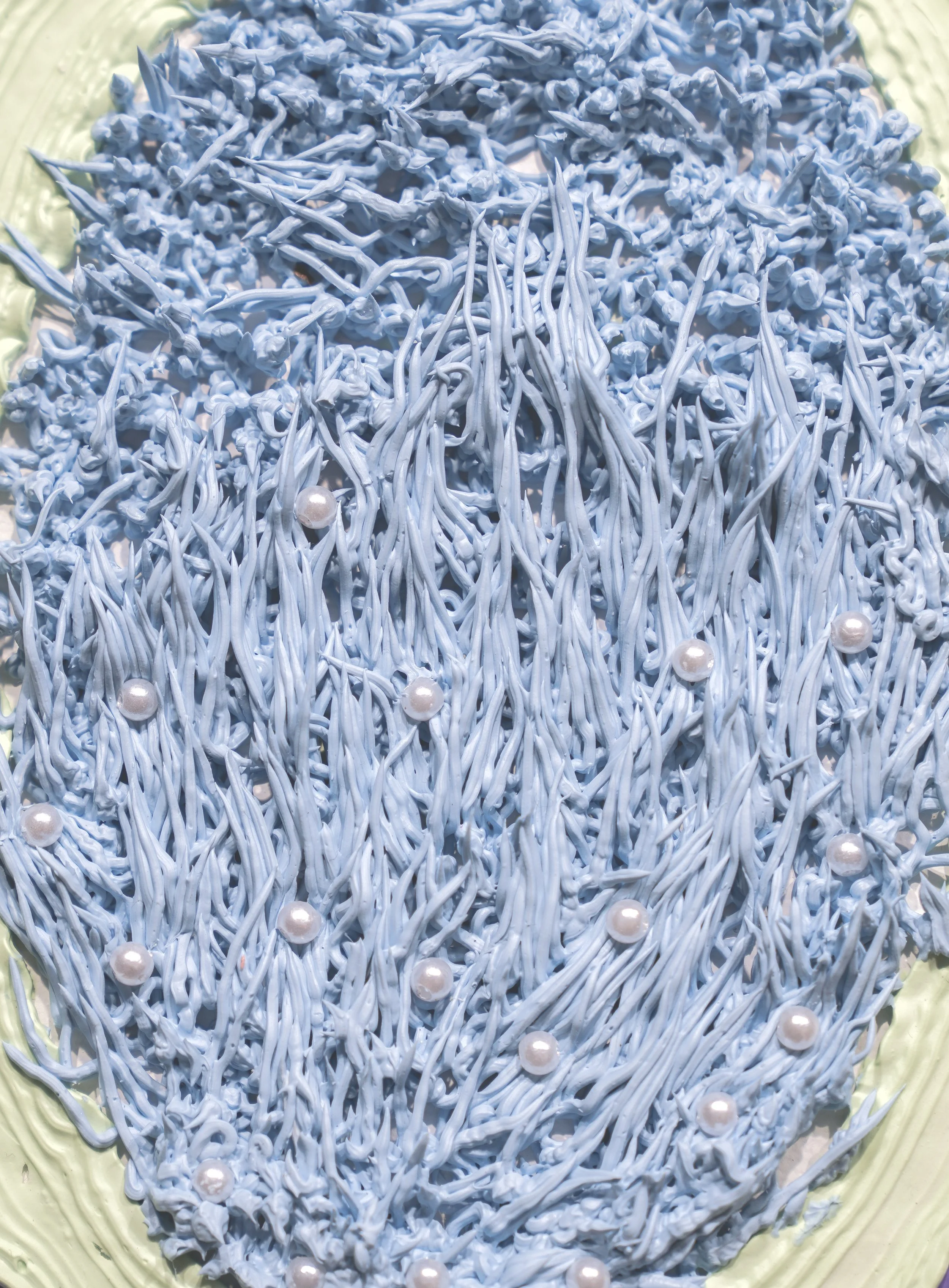
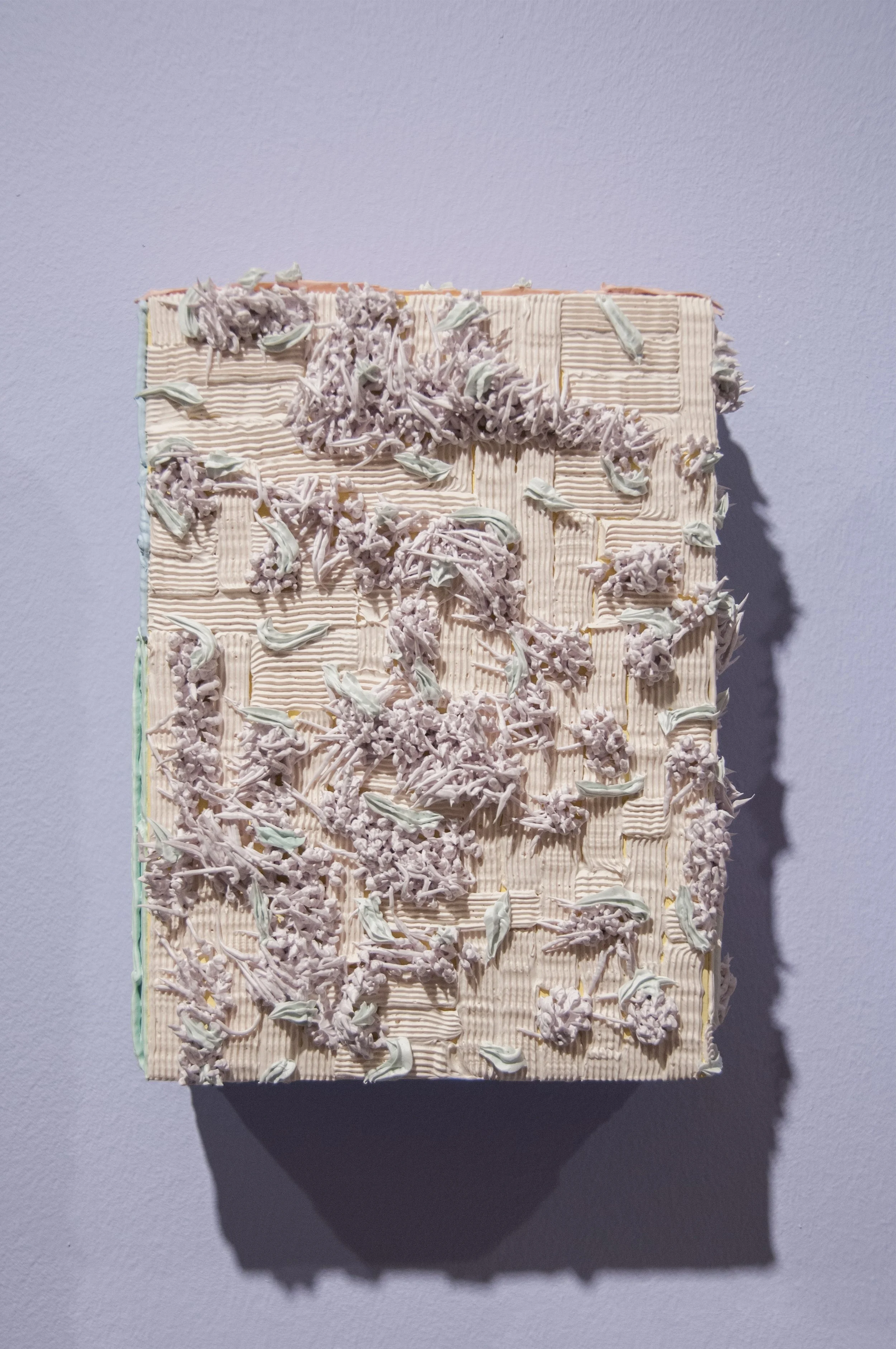

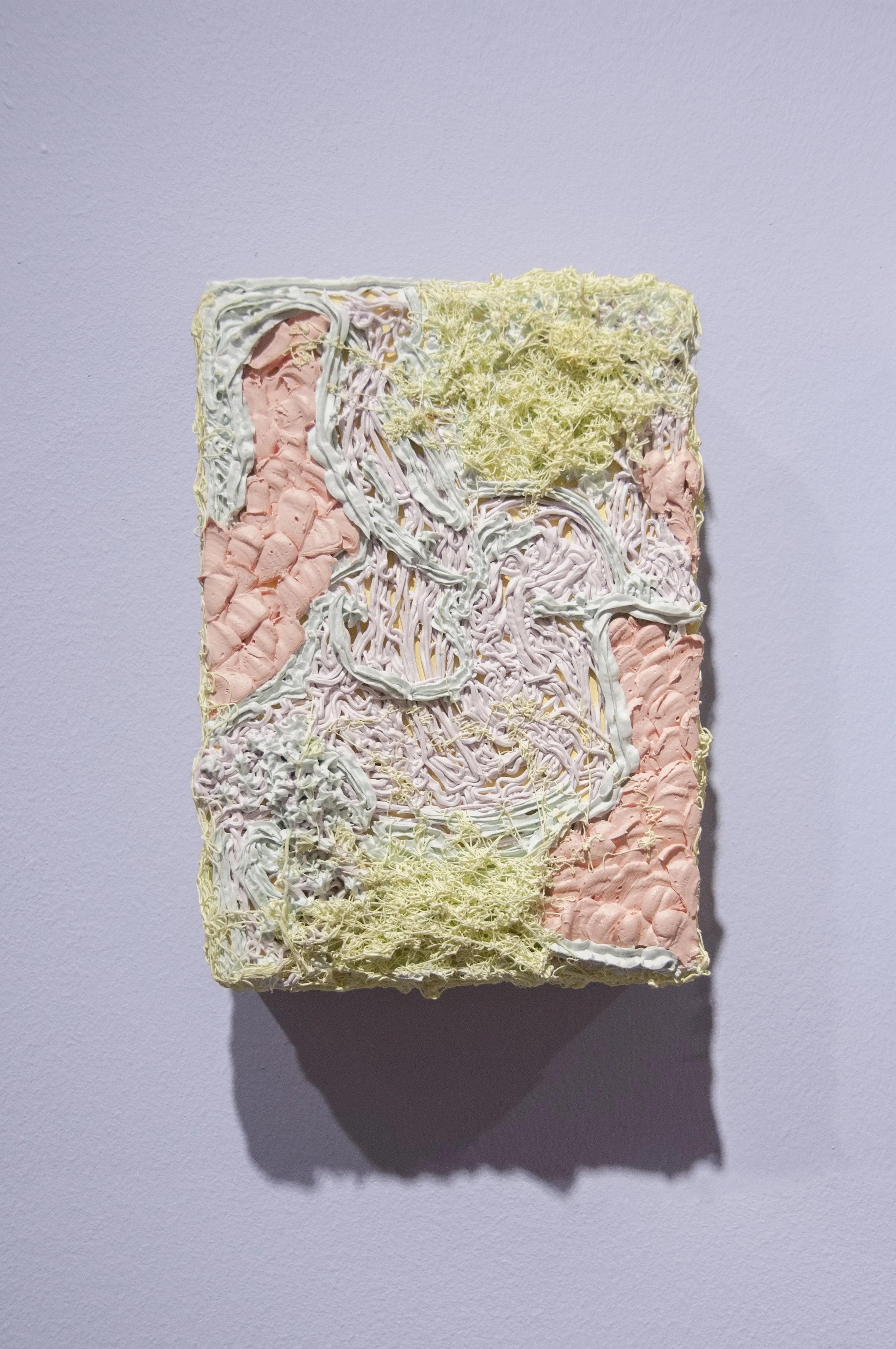
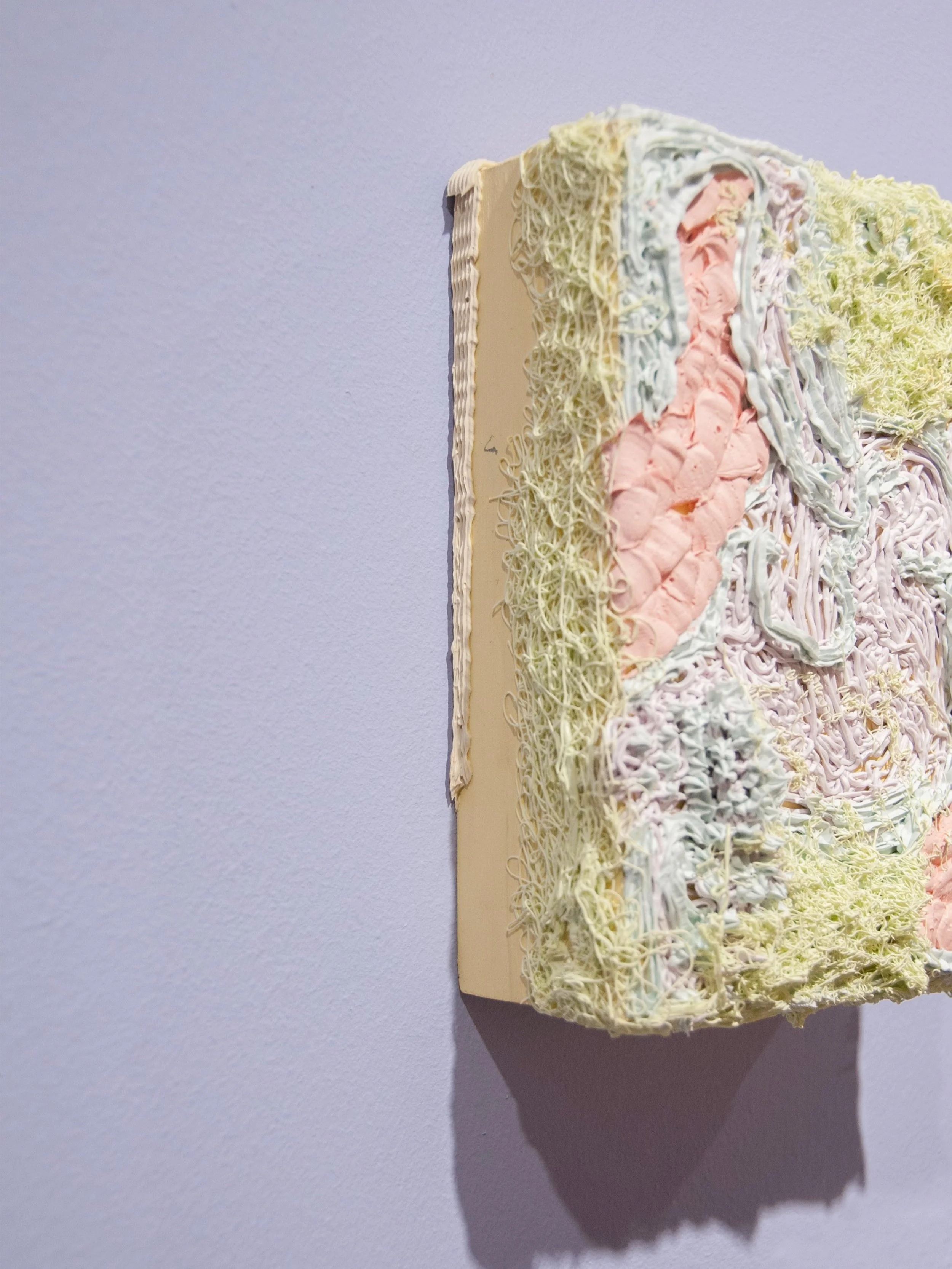
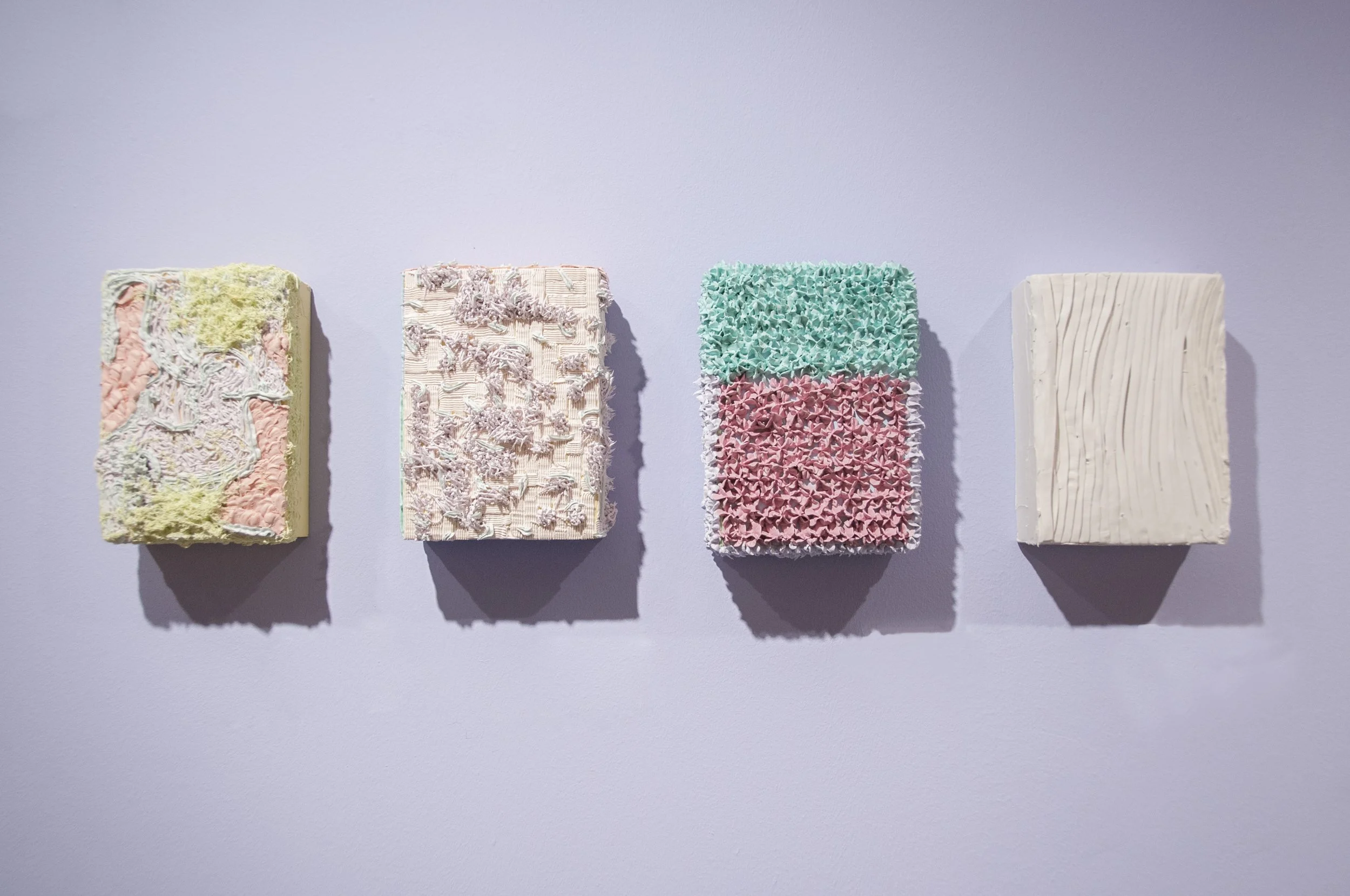

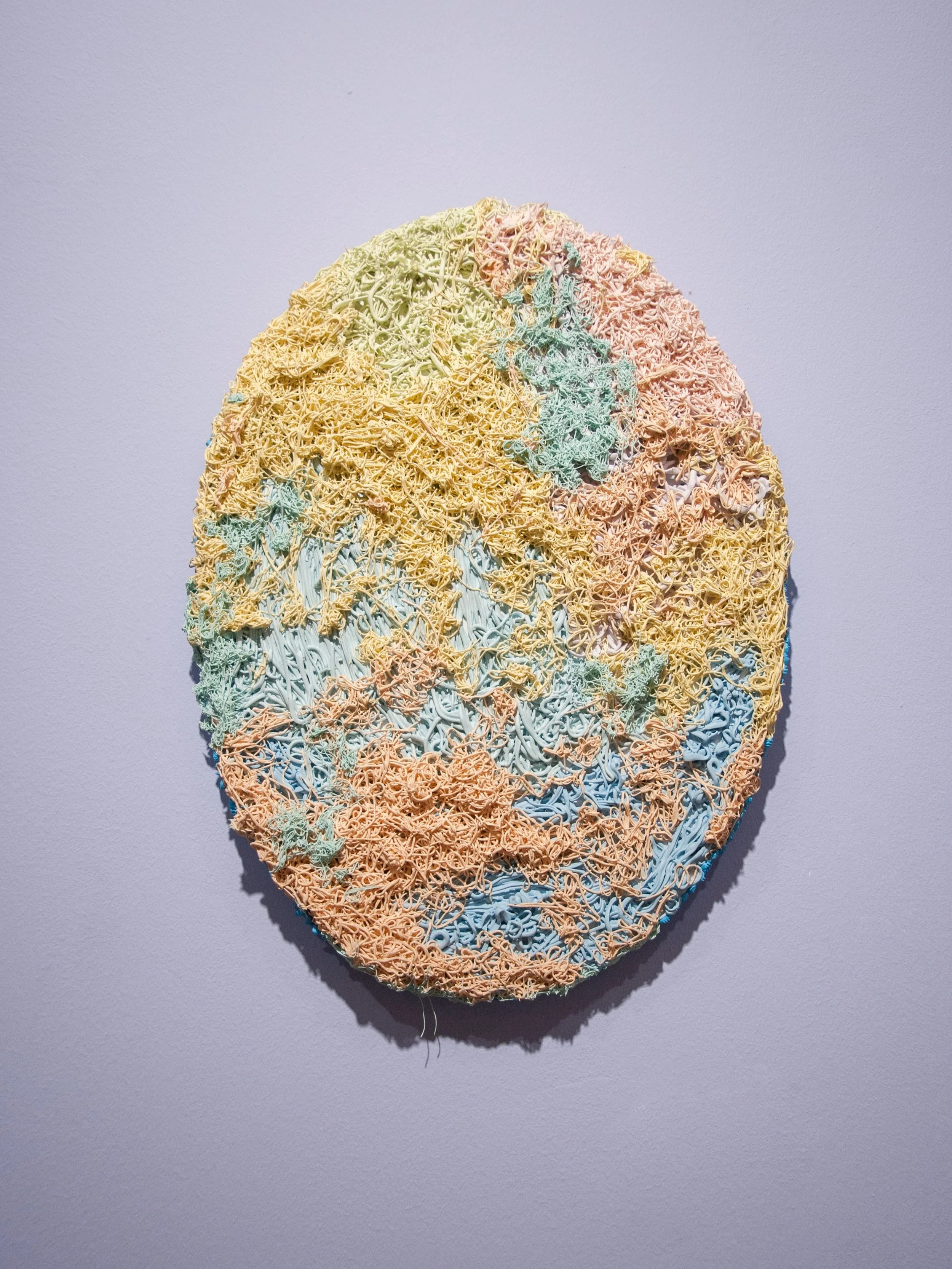
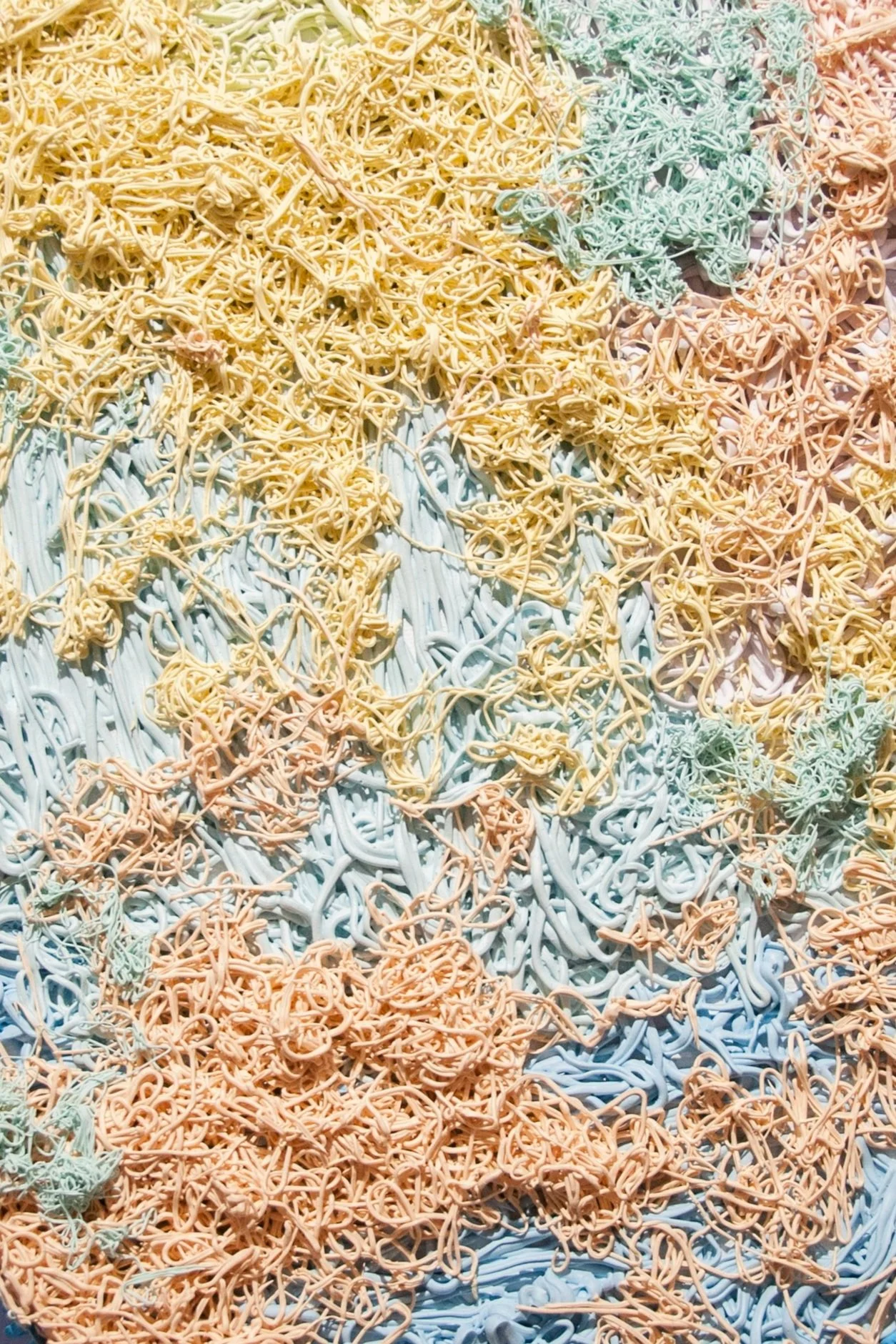
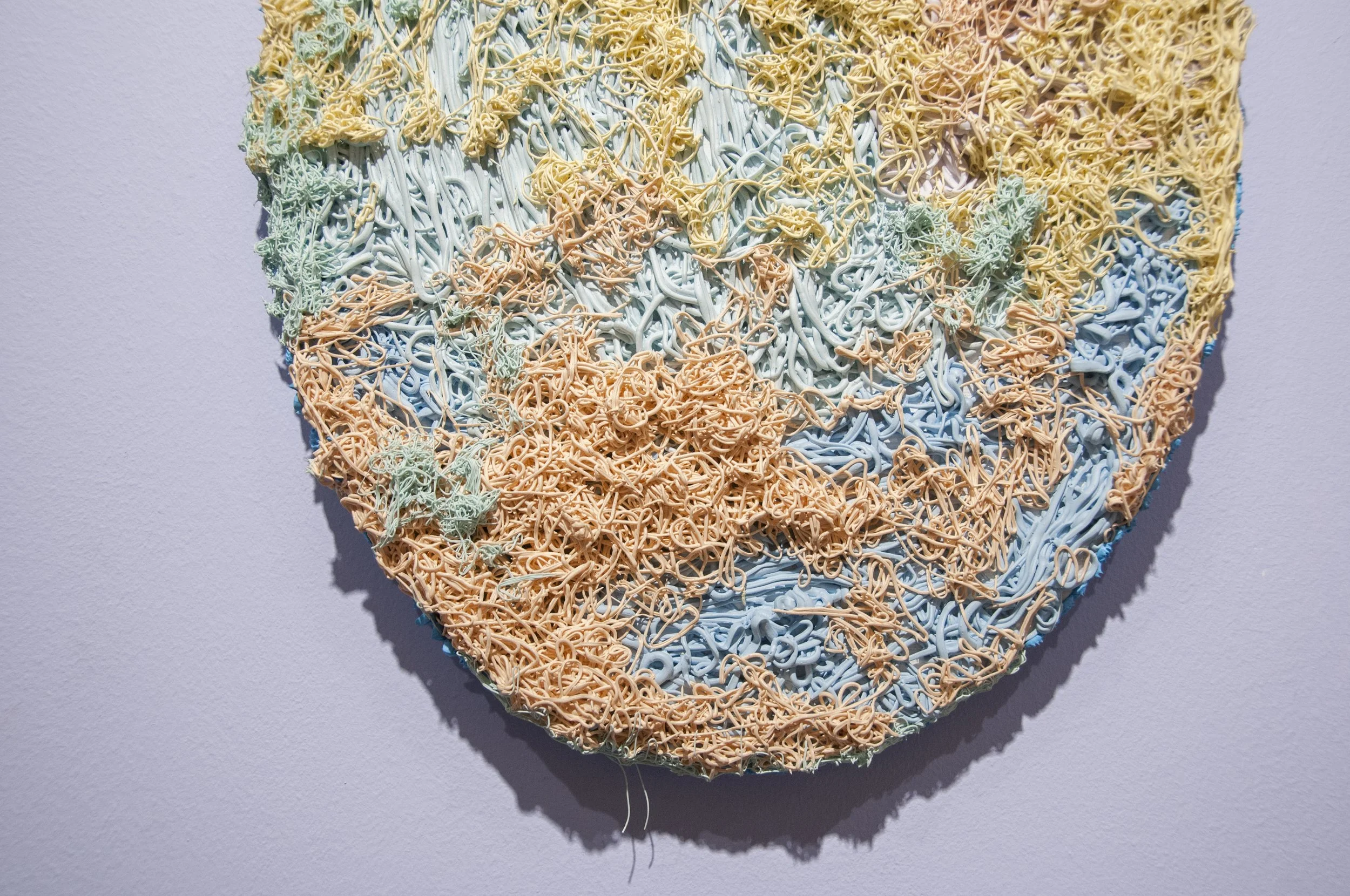
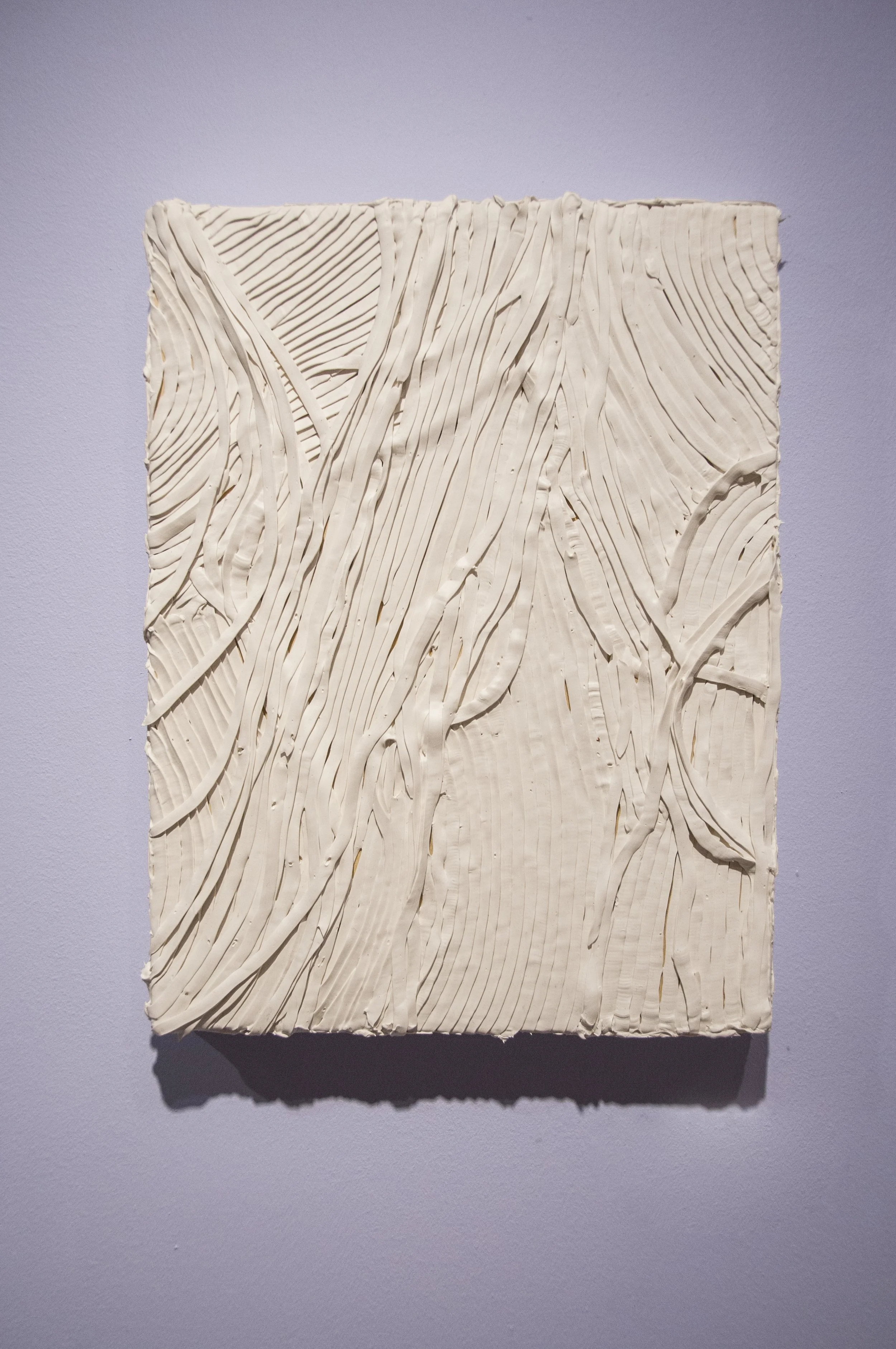
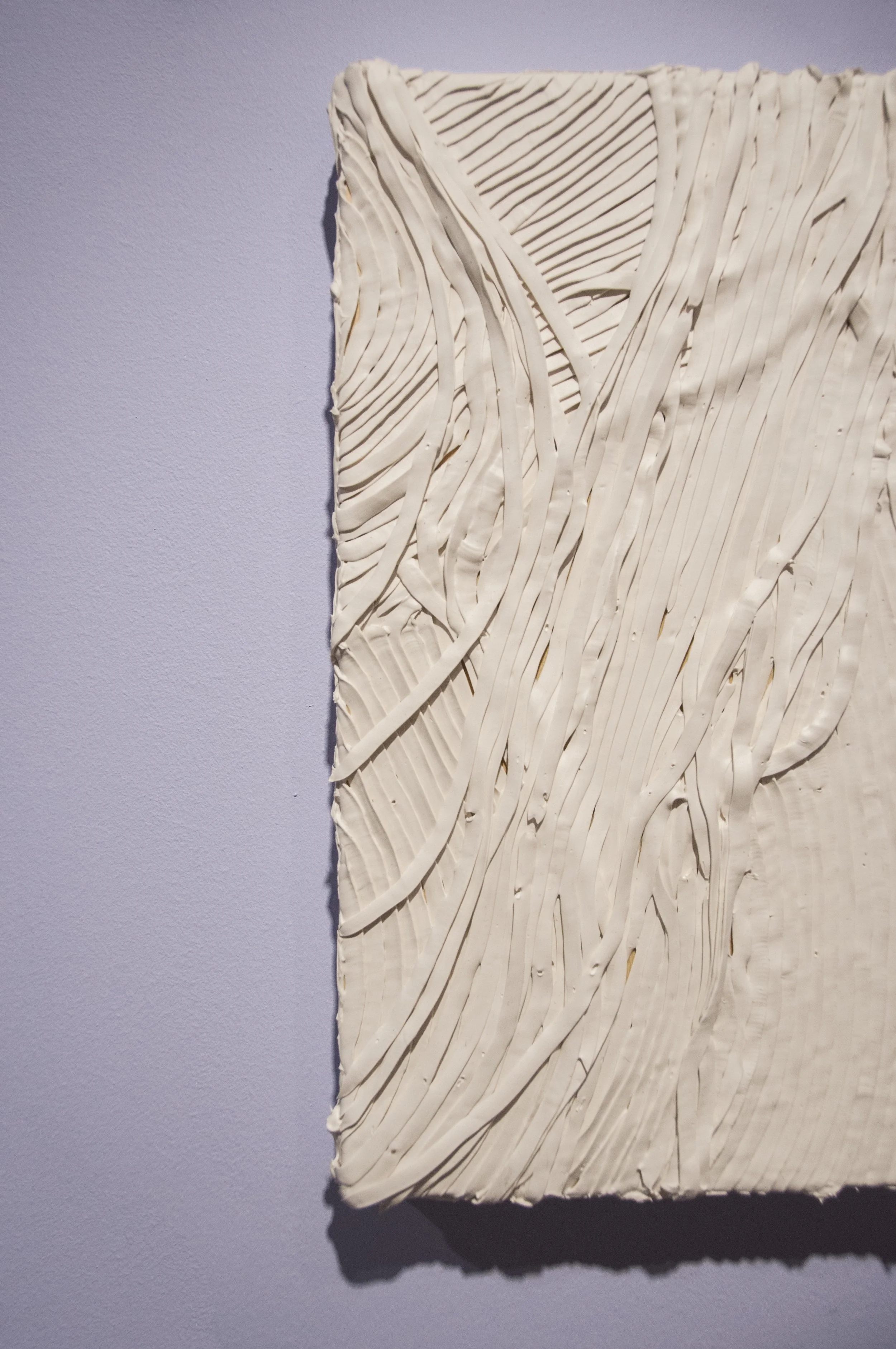
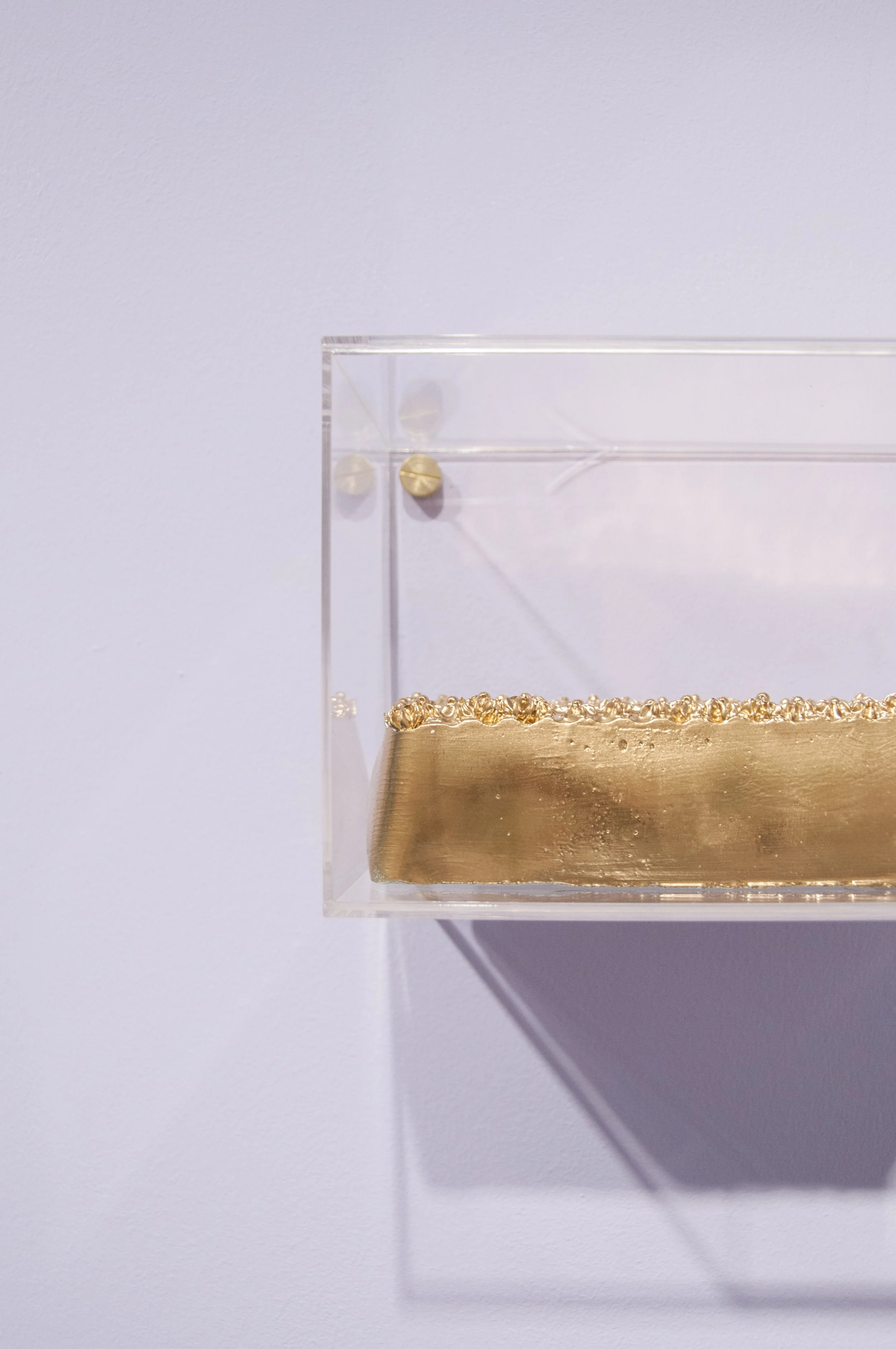
Golden Opportunity No.1 Photo: Arina Rubinskaya

Golden Opportunity No.1 Synthetic polymer paint, epoxy resin, glass beads, acid-free chrome spray paint on plaster contained in an acrylic box with gold-plated screws 19cm x 9cm x 4.5cm Photo: Arina Rubinskaya